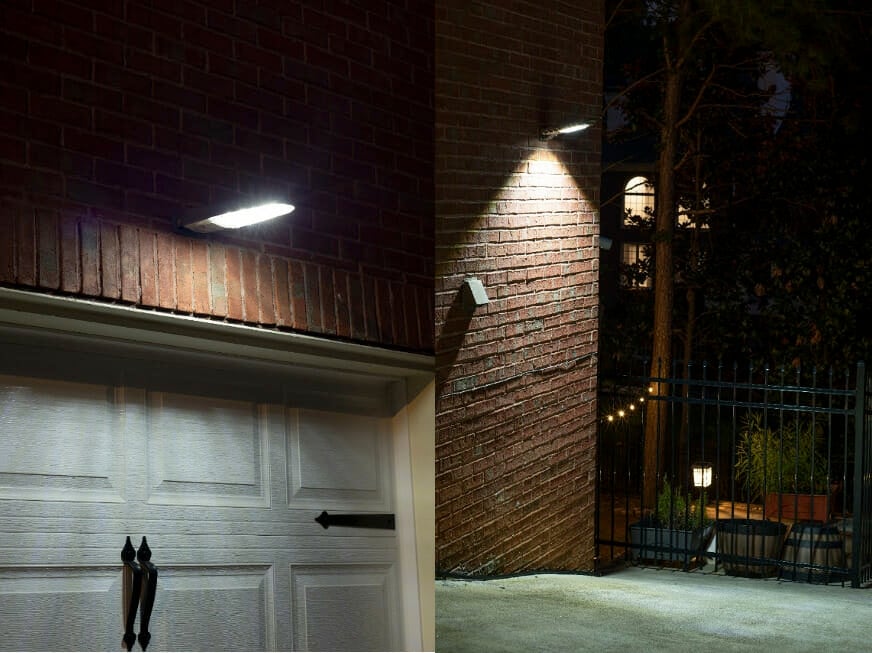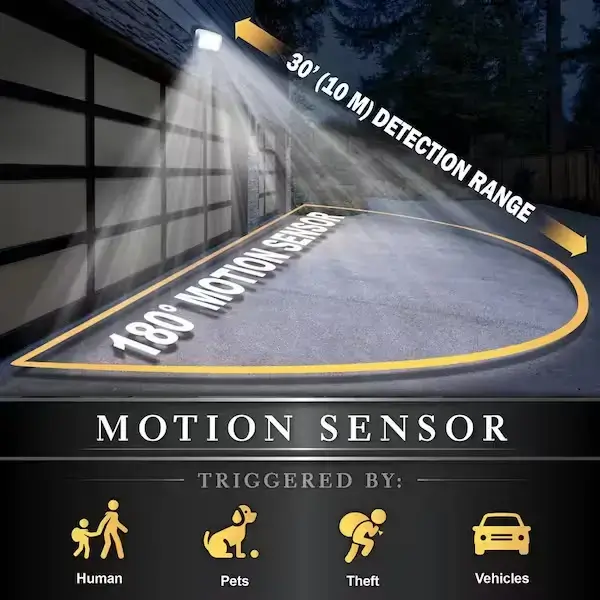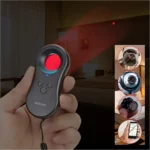Outdoor security lighting plays a crucial role in any property safety plan. This guide explores different lighting types and best practices for effective nighttime security.
Continuous Lighting
Continuous lighting remains on throughout the night. This constant illumination acts as a strong psychological deterrent by exposing criminals and eliminating dark hiding spots [1].

Proper continuous lighting illuminates a property’s full perimeter
Benefits
- Provides consistent lighting all night
- Deters criminal activity by eliminating dark spaces
- Gives home a lived-in look
Drawbacks
- Higher energy costs from constant usage
- Potential light pollution for neighbors
Continuous lighting works well for commercial locations and residential properties seeking complete nighttime lighting coverage. It should be combined with motion sensor lighting for balanced visibility.
Motion Sensor Lighting
Motion sensors detect movement within their adjustable range, triggering illumination to startle potential intruders [2]. Strategic motion activated lighting placement provides cost-effective security.

Adjustable motion sensor detection range
Benefits
- Energy efficient
- Customizable zones
- Activates on intruder movement
Drawbacks
- Can be triggered by small animals
- Periods of darkness between activations
Thoughtfully positioned motion sensors work well for driveways, side entrances, or low-traffic areas needing strategic lighting automation.
Flood Lights
Flood lights distribute intense light over a wide exterior area. This broad high-luminance illumination startles intruders [3].
Benefits
- Wide coverage area
- High light output
- Adjustable angle
Drawbacks
- Glare for neighbors
- Higher energy consumption
Flood lights effectively cover entry points or high-traffic zones. They’re ideal for commercial loading bays, parking lots, driveways, and backyards. Lighting placement is key.
Standby Lighting
Standby systems activate automatically when primary lighting fails [4]. This backup provides constant lighting visibility and deters criminals exploiting outages.
Benefits
- Backup illumination if main lighting fails
- Deters blackout exploitation
- Enables monitoring during outages
Drawbacks
- Additional fixtures and wiring
- Only activates during outages
Standby lighting delivers crucial redundancy where constant visibility is important, like commercial locations or remote residences.
Best Practices
Follow these tips for optimal security lighting installation:
- Eliminate dark zones with continuous lighting
- Illuminate all entry points with flood lights
- Direct floodlights downwards to reduce glare
- Place motion sensors in likely intruder pathways
- Use a mix of lighting types for balanced coverage
- Keep bulbs clear from obstructions to maximize light distribution
- Mount lights 8-10 feet high to avoid tampering
- Consult local lighting codes and ordinances
With thoughtful lighting design and strategic placement, security lighting deters criminals and provides true nighttime safety.
Ready to Enhance Your Property’s Security?
If you found this guide helpful and are considering upgrading your security lighting, check out our in-depth reviews on the best security lighting products. Make an informed decision and secure your property effectively.
Sources
[1] https://www.lrc.rpi.edu/programs/nlpip/lightingAnswers/lightPollution/lightTrespass.asp
[2] https://www.stanleysecuritysolutions.com/services-and-solutions/security-systems/motion-activated-lighting
[3] https://www.shineretrofits.com/lighting-center/types-of-security-lighting/
[4] https://www.fs.fed.us/t-d/pubs/pdfpubs/pdf99232823/pdf99232823dpi72pt04.pdf


